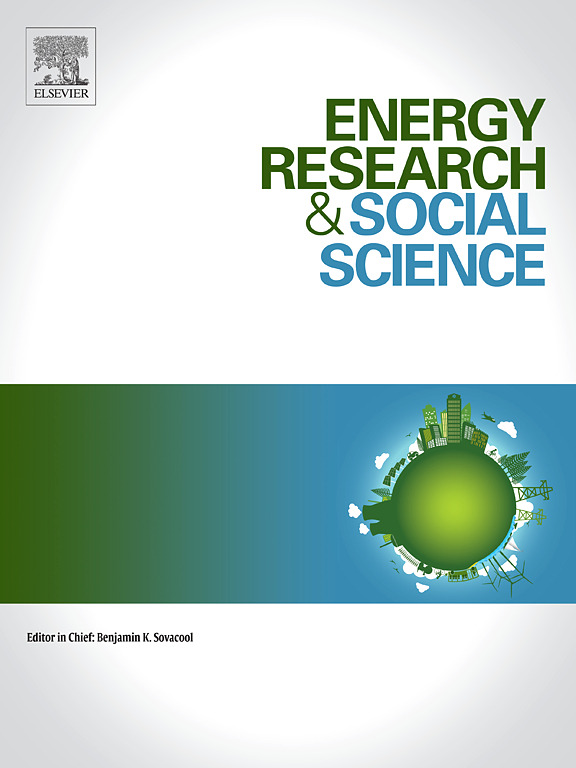从障碍到遗产:150年来采矿研究中冰川地位的变化
IF 7.4
2区 经济学
Q1 ENVIRONMENTAL STUDIES
引用次数: 0
摘要
虽然冰冻圈因气候变化而恶化,但关键矿物的开采正在扩大,以供应清洁能源转型,通常是在冰川地区。我们通过对1875年至2023年的93篇文章的系统回顾来探索这些趋势的趋同。在“水社会循环”的框架下,我们关注采矿和冰冻圈之间的物质和认识论联系,以及这些联系如何随着时间的推移而演变。我们将这些文献分为四类冰川-采矿相互作用,它们往往按时间顺序出现为学术研究的焦点:(1)冰川作为采矿的障碍,(2)冰川作为采矿的档案,(3)采矿影响和灰尘,以及(4)冰冻行动主义的兴起。一个多世纪以来,我们发现,采矿活动不仅帮助塑造了物理冰冻圈,而且还帮助形成了有关冰冻圈的论述和科学知识。在过去的二十年里,研究经历了一个转变,从冰川作为采矿的“障碍”的主导话语,到冰川作为“遗产”的认识,即采矿可能威胁到的敏感、独特和有价值的生态系统。我们的研究结果表明,需要在更广泛的地点进行研究,以及更多的跨学科研究,以解释冰冻圈和采矿之间日益复杂和广泛的相互作用。这些发现还有助于阐明为清洁能源转型确保关键矿物的一些关键环境正义挑战。本文章由计算机程序翻译,如有差异,请以英文原文为准。
From obstacles to heritage: The shifting status of glaciers across 150 years of mining research
While the cryosphere is deteriorating due to climate change, mining of critical minerals is expanding to supply the clean energy transition, often in glaciated regions. We explore the convergence of these trends through a systematic review of 93 articles from 1875 to 2023. Informed by the framework of the “hydrosocial cycle,” we attend to both material and epistemological links between mining and the cryosphere, as well as how these links have evolved over time. We organize this literature across four categories of glacier-mining interactions, which have tended to emerge chronologically as foci of scholarly research: (1) Glaciers as Obstacles to Mining, (2) Glaciers as Archives of Mining, (3) Mining Impacts and Dust, and (4) The Rise of Cryoactivism. For over a century, we find, mining activities helped shape not only the physical cryosphere, but also the production of discourses and scientific knowledge about it. Over the last two decades, research has undergone a shift from a predominant discourse of glaciers as “obstacles” to mining, towards a recognition of glaciers as “heritage” –sensitive, unique, and valuable ecosystems that mining may threaten. Our results demonstrate the need for research across a greater variety of locations, as well as more interdisciplinary research, to explicate the increasingly complex and widespread interactions between the cryosphere and mining. These findings also help illuminate some key environmental justice challenges of securing critical minerals for the clean energy transition.
求助全文
通过发布文献求助,成功后即可免费获取论文全文。
去求助
来源期刊

Energy Research & Social Science
ENVIRONMENTAL STUDIES-
CiteScore
14.00
自引率
16.40%
发文量
441
审稿时长
55 days
期刊介绍:
Energy Research & Social Science (ERSS) is a peer-reviewed international journal that publishes original research and review articles examining the relationship between energy systems and society. ERSS covers a range of topics revolving around the intersection of energy technologies, fuels, and resources on one side and social processes and influences - including communities of energy users, people affected by energy production, social institutions, customs, traditions, behaviors, and policies - on the other. Put another way, ERSS investigates the social system surrounding energy technology and hardware. ERSS is relevant for energy practitioners, researchers interested in the social aspects of energy production or use, and policymakers.
Energy Research & Social Science (ERSS) provides an interdisciplinary forum to discuss how social and technical issues related to energy production and consumption interact. Energy production, distribution, and consumption all have both technical and human components, and the latter involves the human causes and consequences of energy-related activities and processes as well as social structures that shape how people interact with energy systems. Energy analysis, therefore, needs to look beyond the dimensions of technology and economics to include these social and human elements.
 求助内容:
求助内容: 应助结果提醒方式:
应助结果提醒方式:


